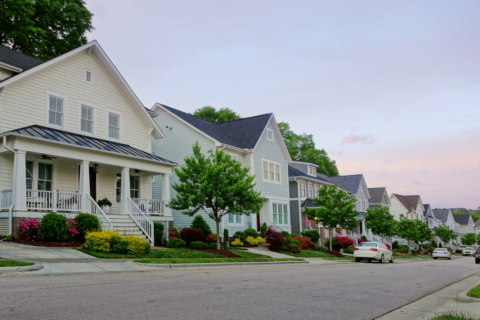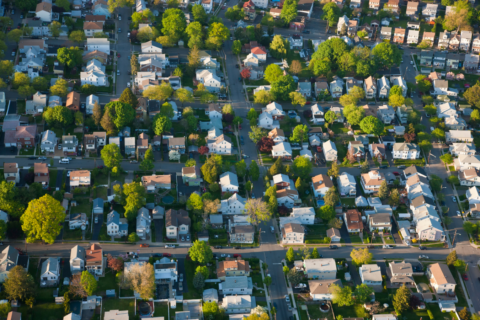Note: The terms LGBT, LGBTQ, and LGBTQ+ are used in this blog. While not interchangeable, these terms are all used in this blog and derived from their respective original sources to uphold the accuracy of the data and programs being presented.
The population of adults aged 65 and older experiencing homelessness is anticipated to nearly triple by 2030, from 40,000 to 106,000. Those who first experience homelessness at age 50 and older typically have experienced a financial or health crisis, lost a loved one, or otherwise experienced a relationship breakdown with the income earner, and/or experienced barriers to continued ability to work. People experiencing homelessness also tend to live with unmanaged chronic disease and limited access to healthcare, meaning health complications are exacerbated; those experiencing homelessness in their 50s experience geriatric conditions such as memory loss, falls, and functional impairments at rates that compared to members of the general population in their 70s.
There are certain factors that increase the disparities in subpopulations of older adults experiencing homelessness that exacerbate their conditions. The LGBTQ community faces special circumstances that overlap with the challenges associated with aging and make LGBTQ elders have an elevated risk of being forced into isolation, hostile living environments, or even homelessness:
- During COVID-19, Black and Hispanic LGBT elders (age 65-plus) were twice as likely to experience poverty, rent their housing, have trouble paying bills and expenses, and face food insecurity compared to white LGBT counterparts.
- Long-term care in the U.S. is typically provided by family members, but LGBT elders are twice as likely to be single and three to four times more likely to be without children than their heterosexual counterparts.
- Medicaid and long-term care provisions, including spousal impoverishment protections, do not apply to same-sex couples, which can threaten financial well-being.
- LGBT elders can be denied housing in many retirement and other long-term care housing settings based on their sexual orientation and gender identity.
Solutions to Homelessness Amongst Older Adults
There are a variety of solutions that cities can implement to alleviate homelessness among older adults. Robust safety nets to protect those experiencing homelessness may encompass many solutions that address different stages of homelessness and the length of service provision.
Rapid Rehousing refers to the provision of short-term rental assistance and services and can play a vital role in alleviating homelessness. The main goals of rapid rehousing are to house people quickly and to promote self-sufficiency. By providing housing for those experiencing homelessness, it can allow people to address other challenges in their lives that may have led to homelessness, such as obtaining employment or substance abuse problems. For older adults experiencing homelessness, rapid rehousing services can be greatly beneficial, as they directly reduce the likelihood of unsheltered homelessness and explicitly work towards finding stable, permanent housing for program participants.
Permanent Supportive Housing (PSH) refers to providing affordable housing coupled with voluntary supportive services to address homelessness. PSH is considered a Housing First principle, meaning there are no preconditions (e.g., sobriety, enrollment in mental health services, etc.) for program participants to access housing. PSH is a key solution to homelessness amongst older adults due to the increased need for supportive services amongst this population, such as personal care, dementia care, and hospice services, and has been shown to be especially successful in housing chronically homeless individuals with behavioral health disabilities (85 percent achieving successful housing).
To prevent homelessness, it is imperative to increase income and protections for low-wage workers and those with disabilities. Older adults who have worked minimum-wage jobs throughout their lives remain highly vulnerable to homelessness, and many low-income older adults rely on federal programs such as Supplemental Security Income (SSI) and Social Security Disability Insurance (SSDI) due to their inability to work. In addition to the benefit payments for these programs being very low, the federal SSI benefit is $783 a month), those experiencing homelessness may also have difficulty accessing benefits they are eligible for due to administrative and informational hurdles such as access to a computer/internet, not having a permanent address, not having a personal phone number, etc. Providing assistance services to aid the application process for these programs can help increase program uptake.
Housing Development Spotlight
Triangle Square Development is the nation’s first affordable housing development with onsite services to address the needs of LGBT elders 62 years and older. In this 104-unit project, residents have access to the full range of services and support provided by the Los Angeles LGBT Center, including case management, home-delivered meals, in-home care and benefits assistance, connection to health and mental health care, HIV support and wellness, counseling and support groups, and more than 75 monthly activities and events provided for free or at low-cost. Financing for the $21,500,000 development was provided by the City of Los Angeles, Redevelopment Agency, Housing Department and the Housing Authority, the California Housing Finance Agency, the California Tax Credit Allocation Committee, the California Department of Housing & Community Development, and SunAmerica.
What’s Next for Cities?
As number of older adults increases in the U.S., cities must develop programs and services to support the population and protect older adults from falling into homelessness. Cities should support initiatives that:
- Increase the supply of affordable housing units, specifically those targeted for extremely low income renters (30 percent or less than the Area Median Income). At its heart, homelessness is due to a lack of affordable housing, and boosting supply will help to close the affordability gap that is currently exacerbating homelessness for all populations, and specifically amongst older adults. Cities can create targeted programs and financing mechanisms to incentivize the development of new housing, rehabilitation of existing housing, and creation of programs that service older adults so there is cross-sectoral support to prevent older adults falling into homelessness.
- Democratize and expand access to homelessness system data. In many communities across the country, only a limited number of employees of the Continuum of Care (CoC) program have access to homelessness system data, and other entities and institutions are left making important decisions without the best data. The expansion of public data sets can be helpful for communities to gain a better understanding of the populations that need additional services targeted supports.
- Expand the provision of community services to create a more robust safety net as the community ages. For example, cities can provide services that benefit older adults such as dementia care, occupational therapy, and palliative care to bolster existing permanent supportive housing programs.






